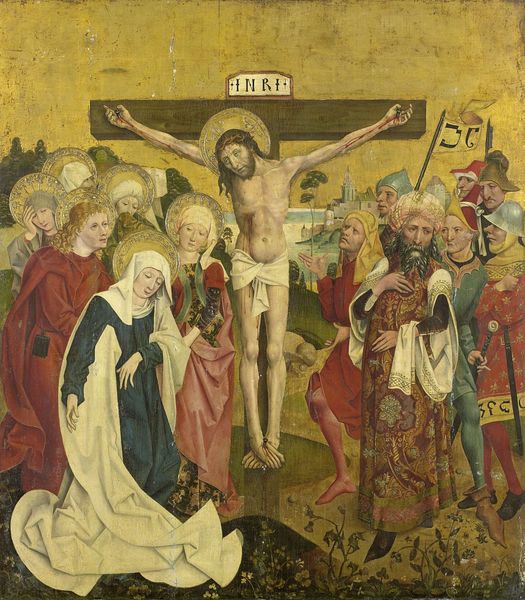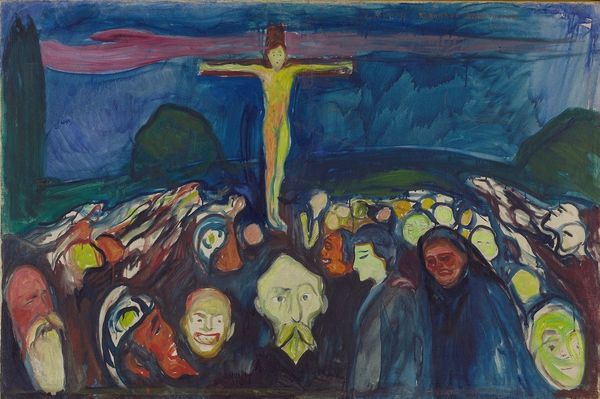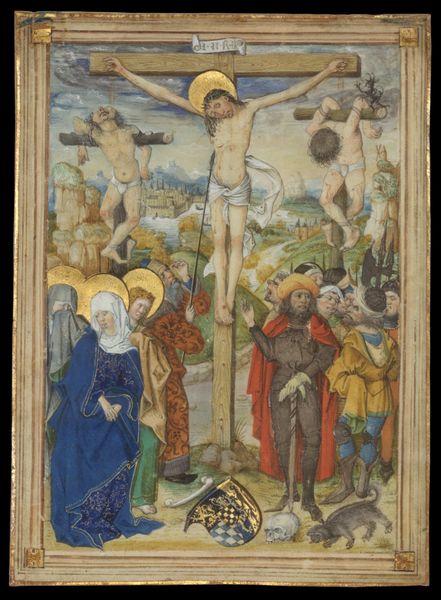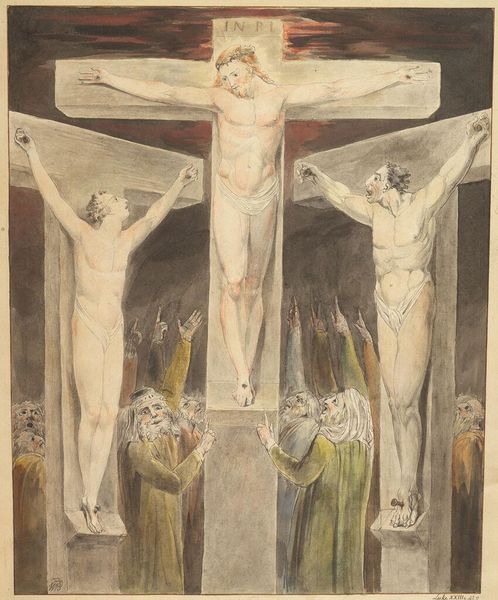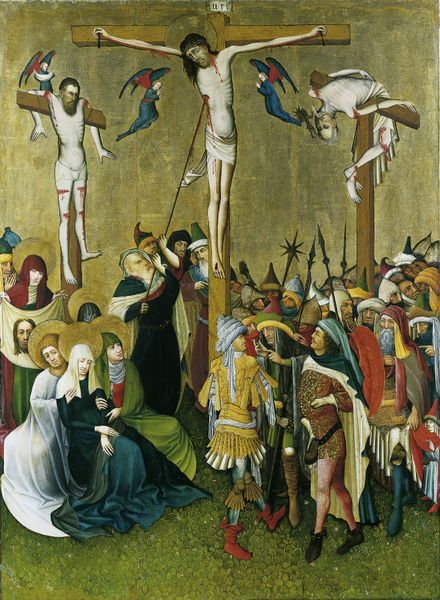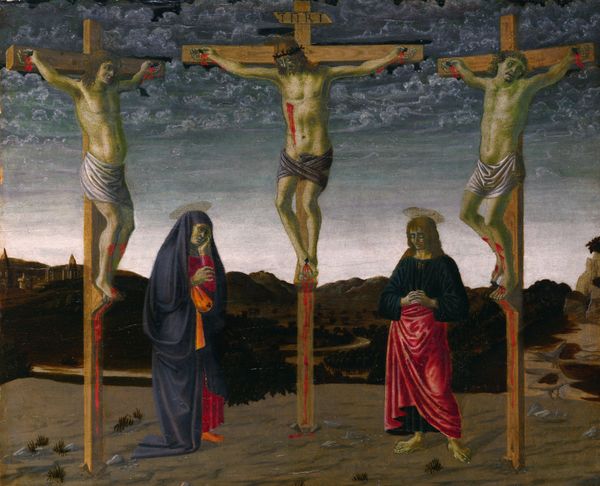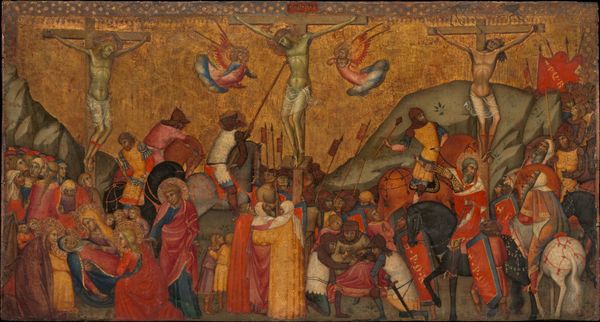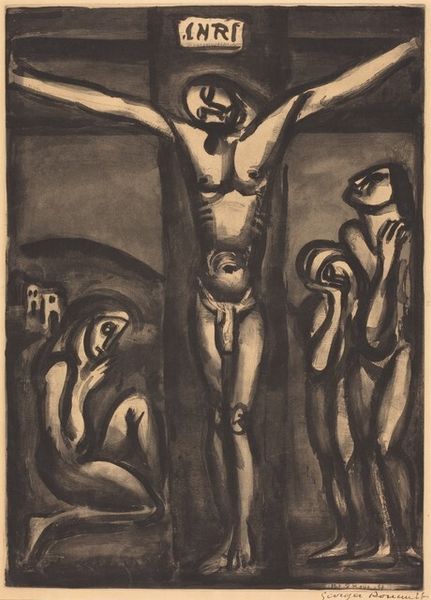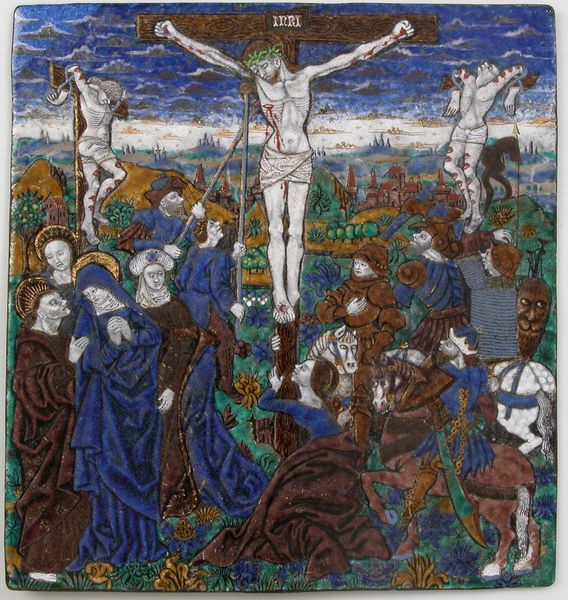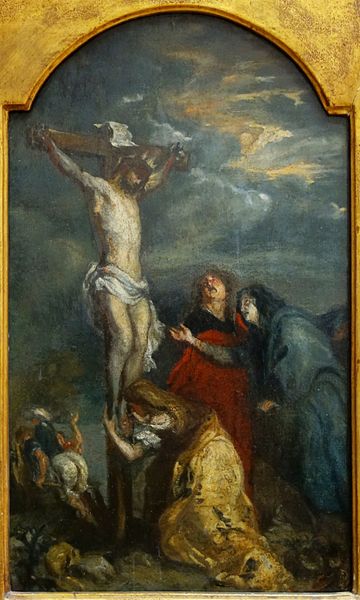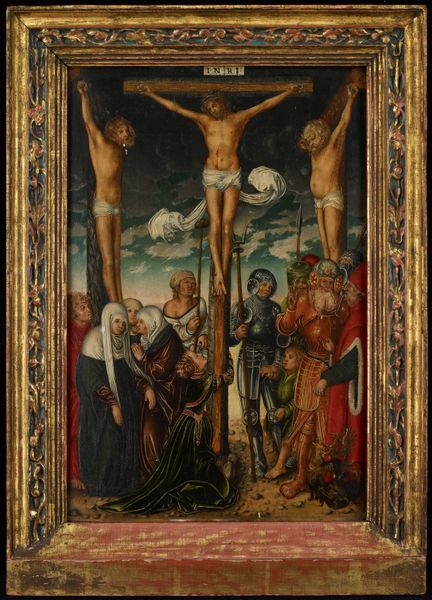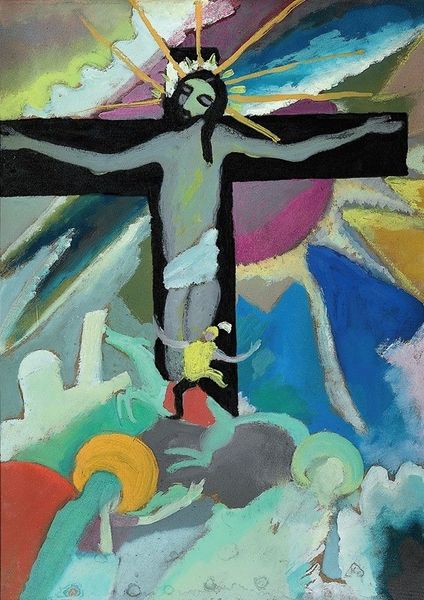
painting, plein-air, oil-paint
#
narrative-art
#
painting
#
plein-air
#
oil-paint
#
landscape
#
figuration
#
oil painting
#
naive art
#
symbolism
#
post-impressionism
Copyright: Public Domain: Artvee
Editor: Here we have Paul Gauguin’s "The Yellow Christ" from 1889, made with oil paint in a landscape setting. The colors are so striking – really saturated yellows and reds. It's a bit… jarring, I guess. What's your take? What should we be looking at here? Curator: Let's consider Gauguin's material choices. The thick application of oil paint, clearly visible brushstrokes - this wasn’t just about depicting a scene. It’s about the very *act* of painting, the labour involved. And that yellow… think about the industrial pigments of the time, the availability, the growing consumer culture that allowed artists access to such intense colors. It reflects a changing market. Editor: So the painting's materiality isn't just about what it shows, but also the changing culture that produced it? Curator: Precisely. The landscape seems Breton, yes? He was drawing from the local culture and life he was surrounded by, not idealized or romanticized depictions. This piece bridges ‘high art’ and the reality of labour, asking viewers to reconsider the conditions and origins of artistic production. Note that his decision to integrate non-western styles like cloisonnism flattens the forms which forces viewers to reconsider artistic conventions and western biases in painting traditions. Editor: That makes so much sense. The yellow now seems less jarring and more... deliberate. A statement on production and culture! Curator: Exactly. By engaging with material realities, Gauguin critiques art world expectations, even anticipates conceptual approaches that focus on artistic production. Now that we've talked about it I have come to a richer interpretation of the painting. Thanks. Editor: Definitely! I’m never going to look at yellow paint the same way again.
Comments
No comments
Be the first to comment and join the conversation on the ultimate creative platform.
